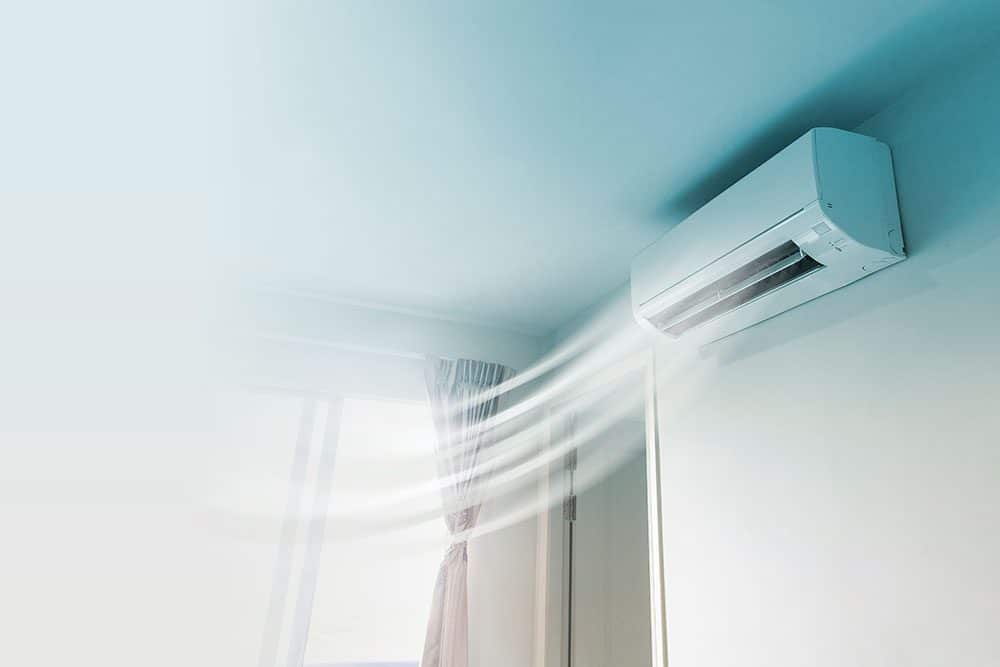At N.E.T.R. Inc., we are still open, and we are taking extra precautions to safeguard the health of our clients and our staff during this time. If you need an HVAC repair, please contact us, and we also encourage you to reach out and set up an AC service appointment.

Routine air conditioning service and maintenance helps your equipment last longer and run more efficiently. What happens during an AC service call? How does regular maintenance benefit your air conditioner? To help you understand the value of routine maintenance, we’ve put together this AC maintenance checklist.
When our service technicians arrive at your home or office, they do the following:
1. Clean the condenser coil.
Dirty coils increase the pressure of the refrigerant in your system, wasting energy and driving up your utility bills.
2. Charge the refrigerant.
If your refrigerant charge is too high, it can increase the cost to run your AC by nearly a third. Unfortunately, besides an unusually high energy bill, an incorrect refrigerant charge does not have any symptoms that are noticeable to the average person, but a service technician can easily check the levels using the superheat/subcooling method.
3. Inspect and Test Controls and Safety Features.
If these parts aren’t working correctly, your AC may break down or lose efficiency.
4. Inspect and Clean Relays and Contractors.
Worn contractors, dirty relays, and loose wires can lead to motor or compressor failures. By addressing these issues during a routine service call, you reduce the risk of unexpected breakdowns and costly repairs.
5. Inspect the Crankcase.
Crankcase issues can cause compressor failure, and again, timely maintenance helps you avoid expensive repair issues.
6. Inspect Wiring and Tighten Loose Connections.
Loose wires can cause your AC’s motor, controls, or compressors to fail.
7. Record Temperature and Pressure Levels.
Accurate records of your AC’s vital data can help spot potential issues before they cause a system malfunction.
8. Test Capacitors.
Bad capacitors can lead to compressor and motor failure.
9. Test the AC Disconnect.
Also called the switch or fuse box, the AC disconnect contains the breakers and fuses for the system, and if it’s worn out or overheated, it can blow fuses and potentially create a dangerous electrical hazard.
10. Lubricate Motors and Bearings.
Your AC works hard, and rotating equipment needs lubrication to prevent it from wearing down excessively fast and causing a breakdown.
11. Inspect and Adjust Belts and Pulleys.
Loose belts and worn out pulleys slow the flow of air through your air conditioner, driving up operating costs and potentially leading to repair issues.
12. Clear the Condensate Drain.
Condensation in your HVAC equipment exits through the condensate drain, and if the drain is clogged with dirt, debris, or algae, water will build up and cause extensive damage to your HVAC equipment and potentially to the surrounding area of your home.
13. Check Voltage and Amps
To ensure your blower motor, compressor, and condenser fan motors are drawing the right amount of power, we check voltage and amp levels. Incorrect levels increase operating costs and decrease the life expectancy of the motor.
15. Check and Calibrate the Thermostat.
If your thermostat isn’t calibrated correctly, your AC will run longer than necessary, driving up your bill. Keep in mind that every degree your AC runs below 78 increases your energy consumption by 5 to 8%.
16. Clean and Inspect the Motor
Finally, we clean and inspect the motor because dirty motors do not run efficiently, and they fail sooner.
Ready to safeguard your AC and reap the benefits of routine maintenance? Then, contact us today. At N.E.T.R, Inc, we have been helping the community meet its heating and cooling needs for over 30 years, and we will continue to meet your needs even in tough times.

